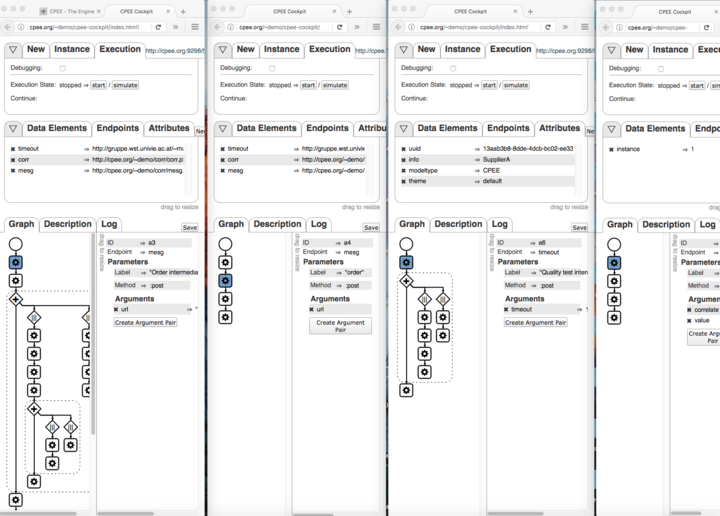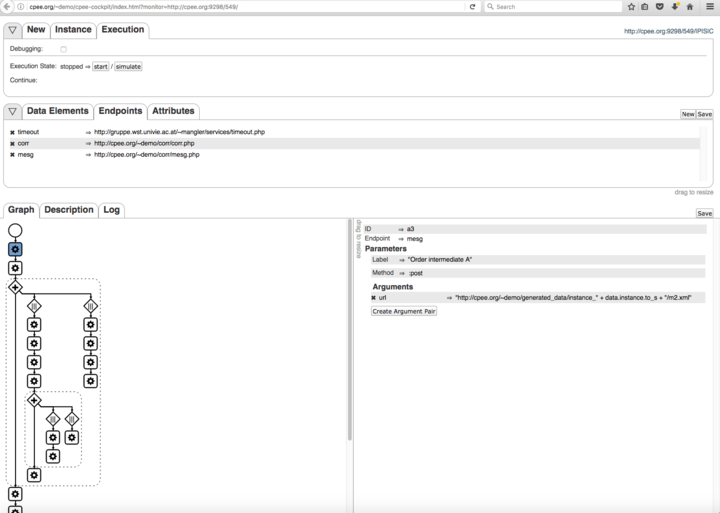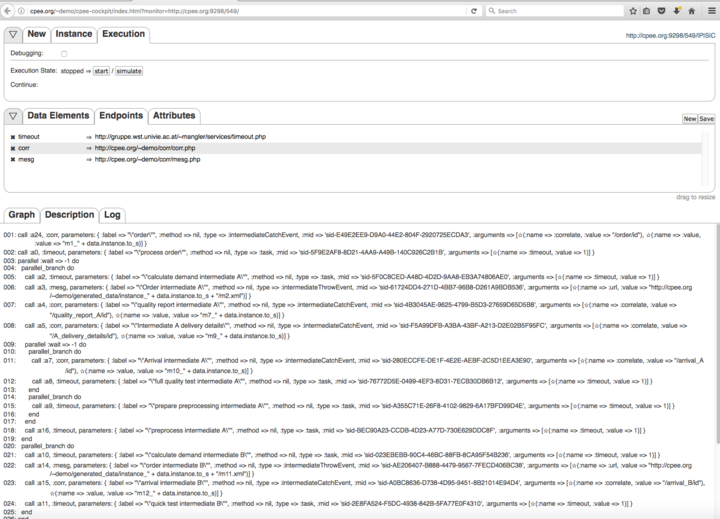Please disable Adblockers and enable JavaScript for domain CEWebS.cs.univie.ac.at! We have NO ADS, but they may interfere with some of our course material.
Event Based Systems & Distributed Business Processes
Supplementary Material
Generation and Transformation of Compliant Process Collaboration Models to BPMN
Technical Reports
Synthetic Data: Manufacturing and Logistics Scenario
BPMN Collaboration Diagram
The collaborative process example represents a supply chain scenario and involves six business partners and describes the manufacturing and delivering process of product orders.
First, the bulk buyer orders a set of products from the manufacturer (e.g., an aircraft). The manufacturing of the product requires several sub-products (intermediates) to be provided by different suppliers. In this scenario, we assume that only two intermediates are required by the suppliers A and B. Based on the order, the manufacturer calculates the demand for the two intermediates A and B (e.g., the fuselage and engines). Intermediate B is ordered from supplier B, whereas intermediate A is sent to the middleman. The middleman forwards the order to supplier A, gets the permission from the authority, and coordinates with special carrier, to deliver intermediate A to manufacturer. When the delivery process starts, the special carrier informs manufacturer to enable the preparation of the preprocessing procedure of intermediate A. Once delivered, manufacturer performs a full quality test and then preprocesses intermediate A. For intermediate B, the full quality test is performed by supplier B and therefore, only a quick test is required by manufacturer. Both tests are compared and validated by manufacturer in order to ensure that the supplier actually performed the full test and not simply transmitted the results of previous tests.\\
When the preprocessing of intermediate A is finished and test results for intermediate B are validated, manufacturer starts the production. Further, manufacturer sends status reports to bulk buyer before and after the production. The final test and delivery of the product complete the process.
Process Models: BPMN format
The process Models were edited in Signavio and exported as bpmn/xml files.
Process Models: Configured XML files for the Cloud Process Execution Engine (CPEE)
BPMN files were imported and configured in the CPEE in order to be executed. Each process model is executed separately as a CPEE instance. Process instances of different models communicate with each other asynchronously. To this endeavor a correlator has been implemented to correlate messages of different processes, and process instances. A distributed version of the correlator is a future work.
Message Exchange Templates
As processeses communicate with each other, it should be specified what type of information they should exchange. Message templates specify the content of the data being exchanged between the partners. Message templates as well as the script to generate consistent data are provided in the following files. The latter uses the templates to fill the xml files with execution data.
Collaborative Process Execution
The message instances generated in the previous step will be used by process instances during the execution phase. The following figure shows a distributed and asynchronous execution of the collaborating partners (for the readability of the figure, we show only four out of 6 processes). The exchanged messages are specified in the previous step. All execution events generated by each of the process instances are stored in a log that will be used for the failure detection.
Generated Log
The generated log can be found in the following file:
Letzte Änderung: 03.05.2022, 14:55 | 641 Worte




